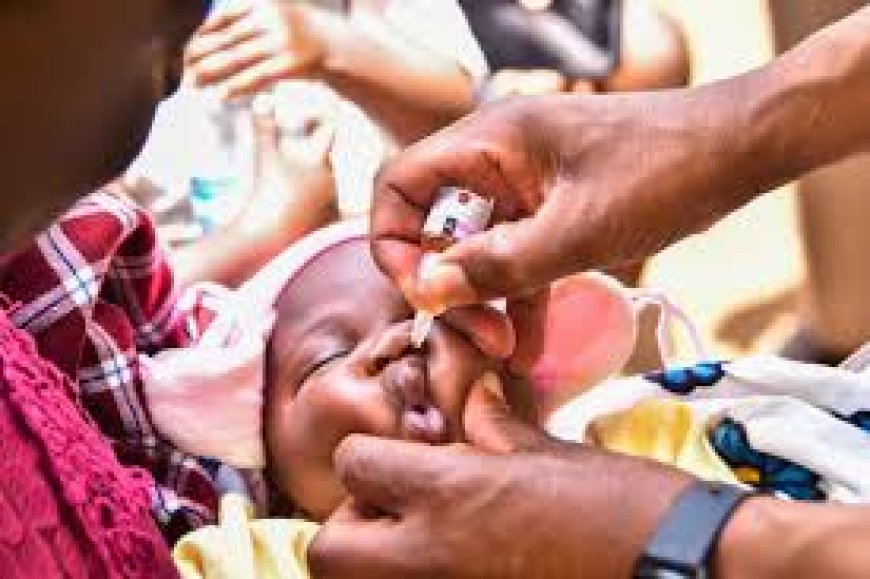Nakuru County gears for major influenza vaccination drive

Nakuru,
Tuesday, October 17, 2023
KNA by Anne Mwale
Nakuru County Government is currently putting final touches to its influenza vaccination programme.
The devolved unit’s health department will partner with the Vaccine Alliance (GAVI), a Global Health Partnership, to roll out the vaccination campaign in all the 11 Sub-Counties, targeting infants aged between 6 to 23 months, health workers and their next of kin.
People with lower immunity like children, individuals with underlying medical conditions, the elderly and those naturally prone to viral infections are also set to benefit from the drive.
Speaking during a sensitization workshop for 33 Sub County Health Managers on influenza management and vaccination, County Executive Committee Member (CECM) in Charge of Health Services Ms Jacqueline Osoro said they would reach even the remote parts of the county.
The training was also geared towards preparing frontline healthcare workers to detect and investigate influenza and building their capacity on case management as well and heighten surveillance in emergency situations.
Ms Osoro indicated that to protect the health and safety of patients and other healthcare workers, and to maintain immunity in the healthcare worker population, vaccination for influenza was highly recommended for all healthcare workers.
“Frontline health workers operate in a high-risk environment where there is possible exposure since some patients do not know they have infectious ailments. Some of them are asymptomatic. As part of GAVI’s 2021-2025 agenda towards increasing access to immunization, all healthcare workers in public institutions within the devolved unit will receive doses of the latest formulation of influenza vaccine free of charge,” she disclosed.
The CECM noted that due to their occupation, healthcare workers were more likely to be exposed to, acquire and transmit vaccine-preventable diseases such as COVID-19, influenza, measles, rubella and pertussis.
She affirmed that Governor Susan Kihika’s administration was committed to preventing and managing influenza among the County’s residents to protect them from severe flu and other respiratory tract illnesses.
The CECM noted that the influenza virus contributes about 5 percent to 27 percent of medically attended cases of Acute Respiratory Illnesses (ARI) out of which an average of 10 percent get hospitalized with severe ARI.
Ms Osoro said the devolved unit’s risk profile has been heightened as it lies on the northern corridor that connects the port of Mombasa to several East African Countries.
Nakuru, she noted, had been rendered vulnerable to a possible outbreak of influenza due to extensive travel and trade relations it has experienced with foreign countries and that it is a major tourist hub that receives many passengers from around the globe.
“Influenza surveillance has also been activated at all major health facilities in Nakuru County which is a high-risk area. Complications from the flu are estimated to kill between 290,000 and 650,000 people globally each year. Data from influenza surveillance in Kenya over the last 12 years shows that the viruses circulate throughout the year, with peaks from February to April and June to November noted the CECM.
Statistics from the Ministry of Health indicate that a quarter of Kenyan patients who seek medical care for respiratory symptoms have the flu virus in their systems.
The Ministry of Health has previously announced that it was working on plans towards the inclusion of Influenza Vaccine in the Kenya Extended Programme on Immunization(KEPI) where vaccines are administered for free to target groups.
Previously, Kenya has been one of the countries on the continent that did not have an influenza vaccination programme. Nevertheless, the vaccine has been available in the private sector but at a cost way beyond the means of many Kenyans.
Further, due to absence of the national programme, children also don’t receive it as part of their regular immunization schedule in public hospitals.
Chief Officer for Public Health Ms Alice Abuki advised anyone exhibiting symptoms, including chest discomfort or congestion, sore throat, headache and muscle aches, to seek treatment at the nearest health facility.
“With common cold, fever is rare, onset of symptoms is quite gradual and there are rarely any aches or chills,” explained Ms Abuki.
Other precautions include limiting contacts with infected persons, high standards of sanitation practices like washing hands, disinfecting objects and surfaces, keeping warm and drinking plenty of fluids.
Ms Abuki added that Influenza Virus A, which also circulates in birds and could move between species, is responsible for most flu infections and causes the deadliest pandemics — including the 1918-1919 Spanish Flu that killed as many as 100 million people.
Influenza Virus B is found almost exclusively in humans, and causes less severe sickness.
Swine flu, which originates from pigs, was declared a pandemic in 2009 by WHO after the virus ravaged Asian countries and spread to the human population.
The Centre for Disease Control and Prevention estimates that swine flu has infected nearly 61 million persons in the US and caused the deaths of 12,469. Globally, 575,400 people have died.
Severe acute respiratory infection (Sari) is just as dangerous as the swine flu with both flu strains being spread through contact with bodily fluids of an infected person.
According to the World Health Organization, Kenya is among countries where these types of diseases are a major burden on the population. The UN body states that in Kenya, one in ten people dies from respiratory complications.
“All counties must work together to control influenza outbreaks before the arrival of the next pandemic. This includes building capacity to detect and respond to outbreaks, and strengthening health systems to improve the health of the most vulnerable and those most at risk,” says WHO in a statement on influenza.
Some of the symptoms listed by the World Health Organization (WHO) are high temperatures of 38 degrees or above, a cough that lasts 10 days, and difficulty in breathing.
According to Ms Abuki, the influenza vaccination roll-out in Nakuru County would enable patients in public health facilities to access the vaccine free of charge and promptly.
In 2014, the Kenya National Immunization Technical Advisory Group (KENITAG) was directed by the Ministry of Health to provide an evidence-based recommendation on whether the seasonal influenza vaccine should be introduced into the national immunization program (NIP).
In 2016 KENITAG, whose secretariat is hosted by the National Vaccine and Immunization Programme (NVIP), recommended the introduction of the annual seasonal influenza vaccine among children 6 to 23 months of age. However, the recommendation was subject to implementation of a pilot study.
Currently in Africa, only a few countries issue the vaccine annually including Ivory Coast, Egypt, Libya, Mauritius, Tunisia and South Africa.
Every year, the WHO recommends a cocktail covering three or four bases at once — usually two subtypes of the Influenza Virus A species, and two types of Influenza Virus B.
The choice of vaccine mix relies on year-round work by the WHO's Global Influenza Surveillance and Response System, created more than 50 years ago.
The vaccination programme is tailored to address gaps in local data on the socio-economic impact of influenza vaccination programs, strategies for vaccine delivery, and the impact of the vaccination programme on the healthcare workforce and existing immunization programme.
Courtesy; KNA
What's Your Reaction?



































































































































































































































































































